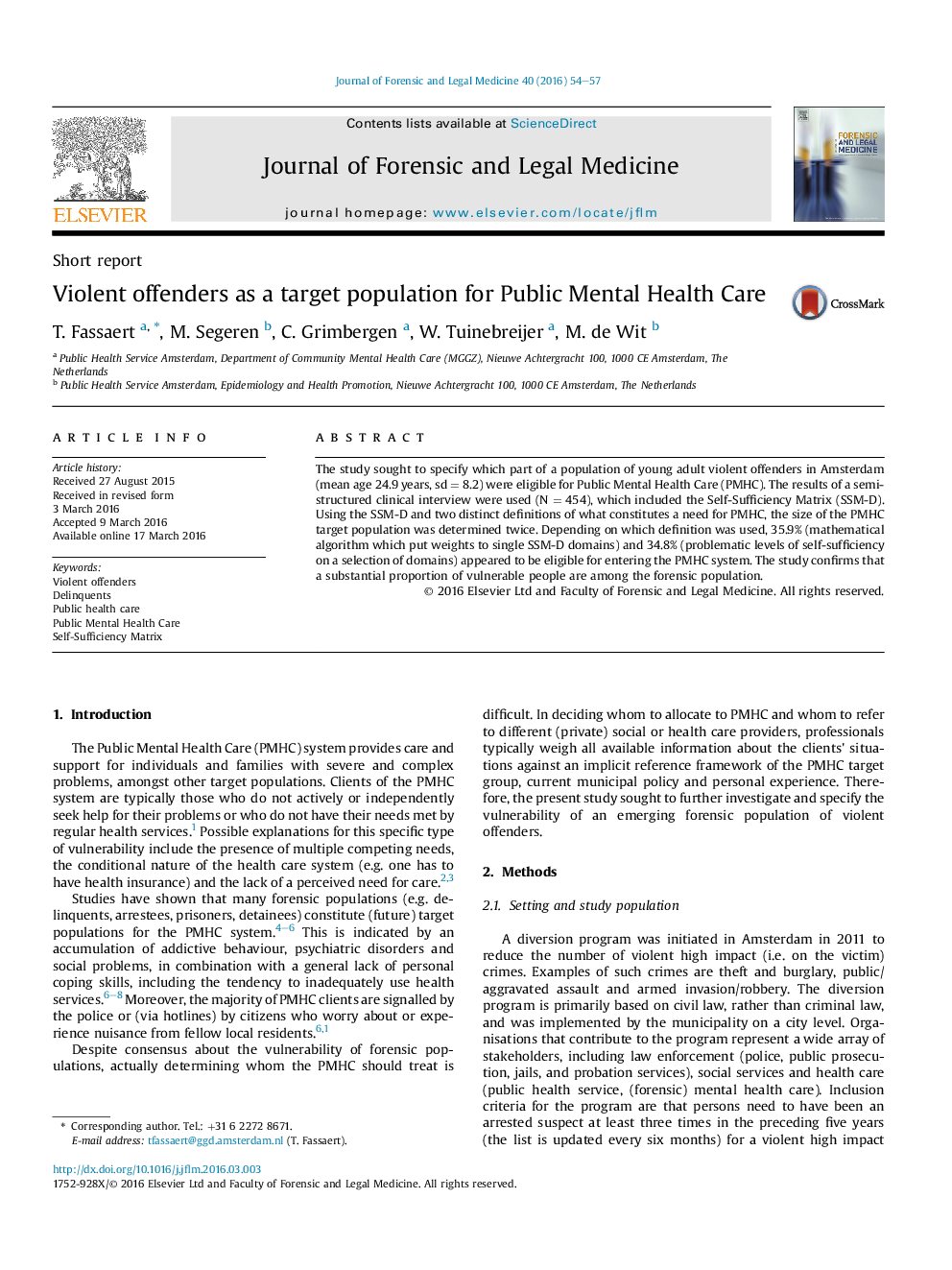| کد مقاله | کد نشریه | سال انتشار | مقاله انگلیسی | نسخه تمام متن |
|---|---|---|---|---|
| 101632 | 161286 | 2016 | 4 صفحه PDF | دانلود رایگان |
• A study was conducted to affirm to what extent violent offenders may be eligible for public health care assistance.
• Clinical interviews were conducted with 558 offenders, of whom 81% had complete data.
• There was a general accumulation of addiction, mental health and social problems.
• Up to one-third of offenders appeared eligible for public (mental) health care.
The study sought to specify which part of a population of young adult violent offenders in Amsterdam (mean age 24.9 years, sd = 8.2) were eligible for Public Mental Health Care (PMHC). The results of a semi-structured clinical interview were used (N = 454), which included the Self-Sufficiency Matrix (SSM-D). Using the SSM-D and two distinct definitions of what constitutes a need for PMHC, the size of the PMHC target population was determined twice. Depending on which definition was used, 35.9% (mathematical algorithm which put weights to single SSM-D domains) and 34.8% (problematic levels of self-sufficiency on a selection of domains) appeared to be eligible for entering the PMHC system. The study confirms that a substantial proportion of vulnerable people are among the forensic population.
Journal: Journal of Forensic and Legal Medicine - Volume 40, May 2016, Pages 54–57
